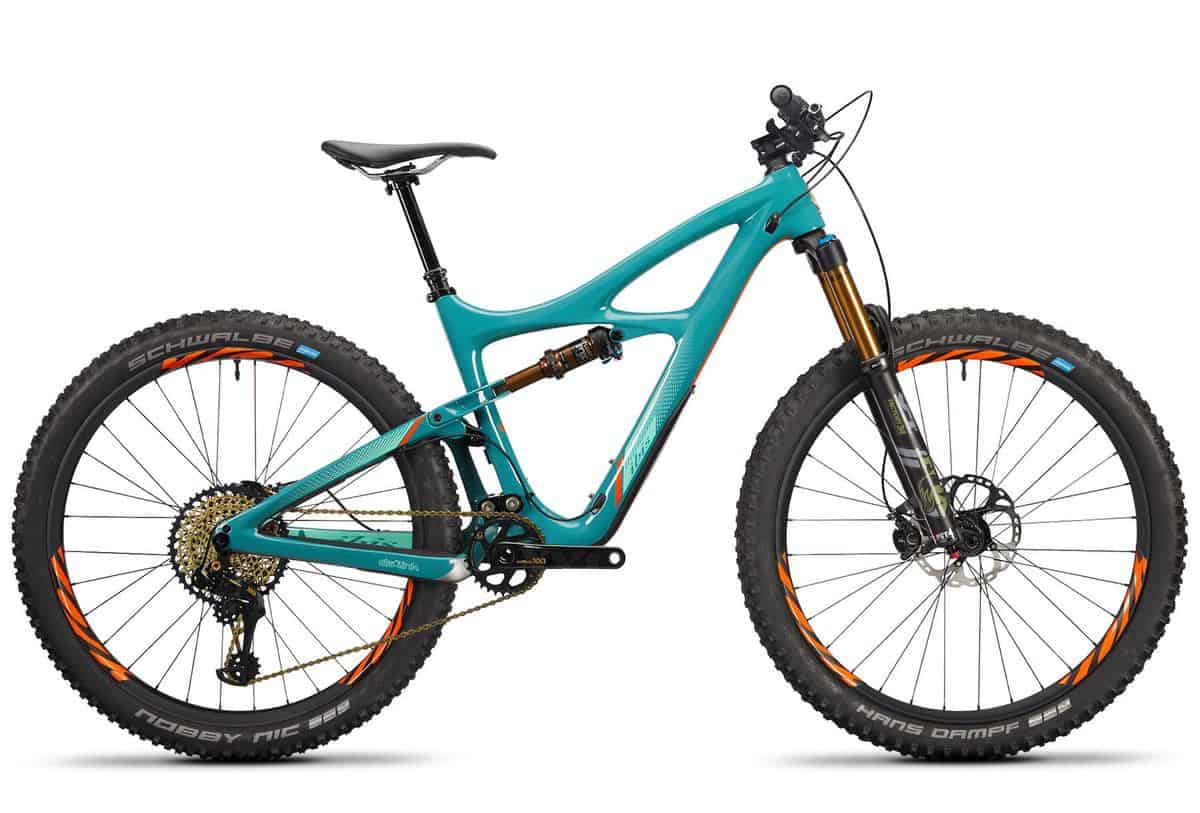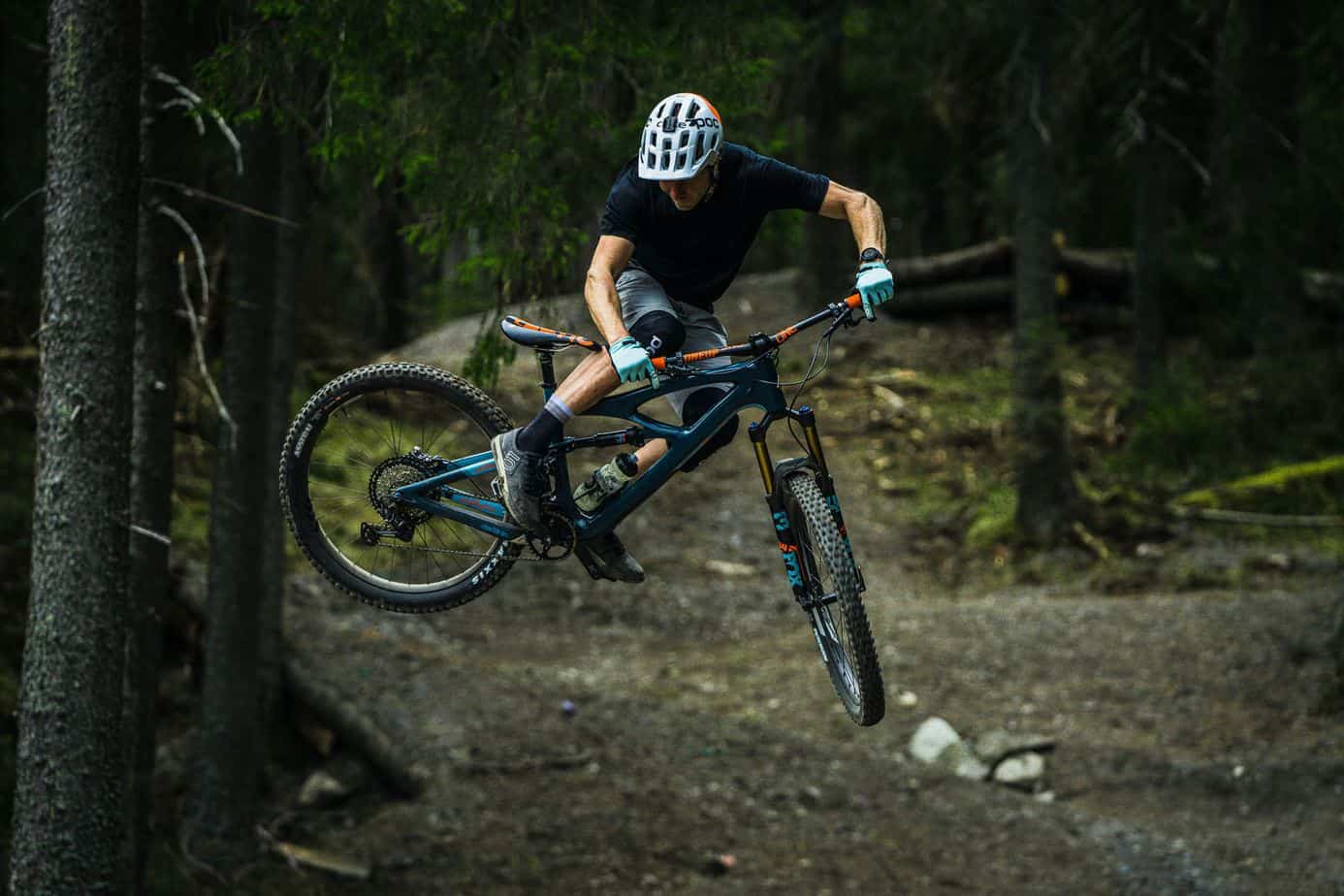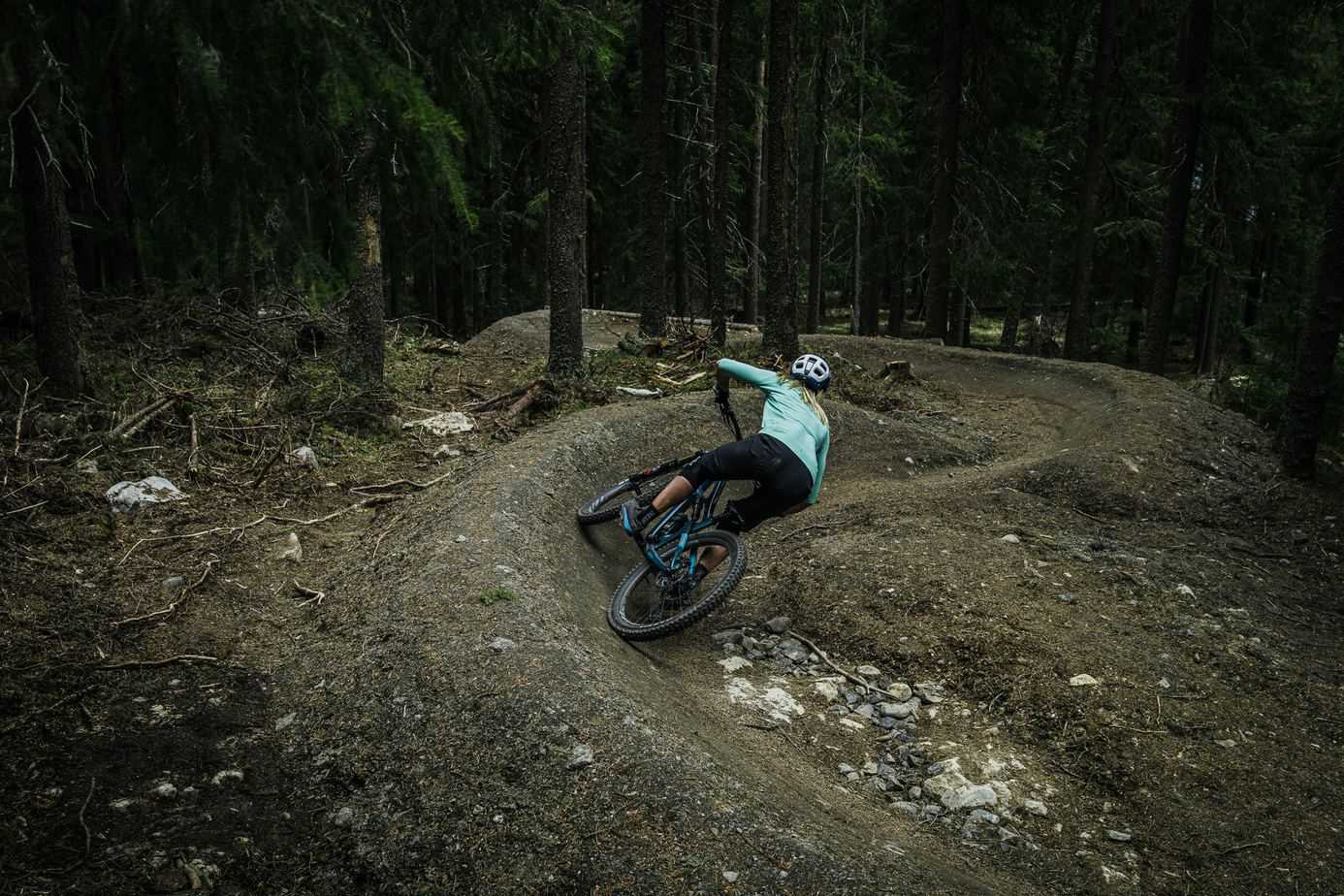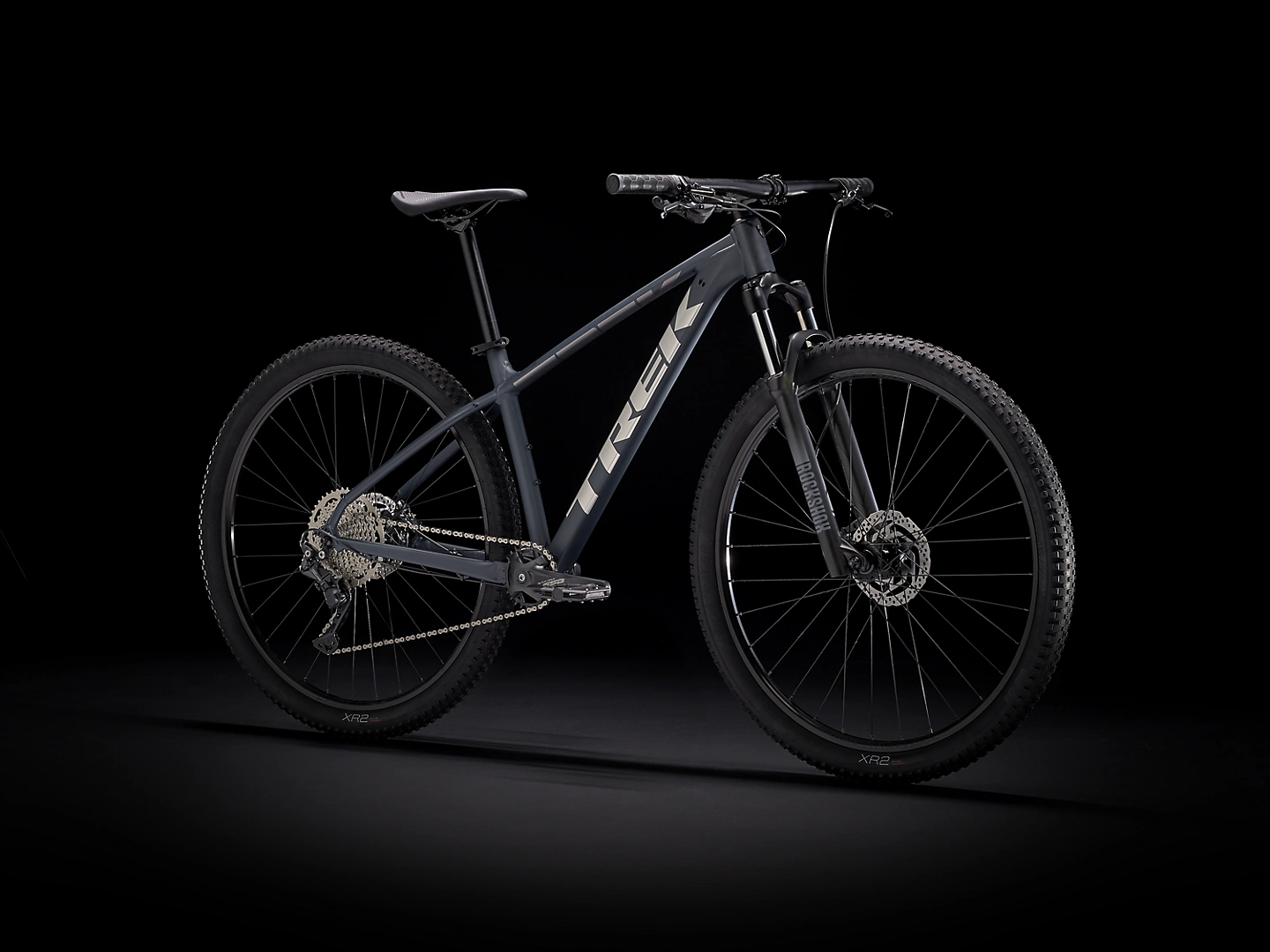- Ibis Hakka MX Review: Yay or Nay? Find Out Here! - September 13, 2022
- Evil the Wreckoning Review – Can This Bike Handle the Toughest Trails? - September 13, 2022
- Is Diamondback Hook Worth It? - September 9, 2022
Sometimes, you just want a bike that is super springy and fun to ride – and our Ibis Mojo 3 review might just introduce you to your new favorite. The Mojo series by Ibis is designed to be nice looking, fun, nimble, and tough – making it ideal for tricky terrain.
Table of Contents
How does Ibis compare to other companies?
Founded in 1981 by Scot Nichol, Ibis is known for making high-performance mountain bikes – he made the first Ibis bike in his garage. They had a brief period of bankruptcy in the early noughties but bounced back with some excellent, high-performing bikes in 2005.
Price-wise, they offer frames from around the $1000 mark (like the DV9) right through to $4000 and beyond (like the Ripmo). The Mojo series is right at the high end of this price bracket, so it’s a bike for those who have money they want to invest in a good piece of kit.
Ibis are similar in price and range to Diamondback. They do offer slightly cheaper models than some companies (like Santacruz, for example), but they don’t offer budget options (like Trek, who offer frames from around the $400-$500 mark). They’re good for intermediate riders who want to upgrade from their entry-level bikes to something a bit better.
What kind of bike is the Mojo 3?
The Mojo was first launched in 1994 and was praised for its innovation at the time. The Mojo 3 is a full-suspension mountain bike, designed to be nimble and fun to ride even on super-rocky, bumpy trails.
It’s on the pricey side, so we wouldn’t class it as an ‘entry-level’ bike – it’s more of an investment. It’s also getting more difficult to come by, as it was discontinued, but you can still pick it up at some stores.
The Mojo series is known for being stylish, and the Mojo 3 frame is distinctive (especially in the bright red color option) – some people love it just for that alone.

The main features of the Mojo 3
Let’s have a look at the Mojo 3 in more detail.
What is it made from?
The frame of the Mojo 3 is made from carbon fiber. It’s designed to be lightweight, with the frame weighing just 5.9lbs (and total weight starting at 26.7lbs) – great for those that struggle with heavier bikes.
There are four sizes to choose from, from small right through to x-large, and all sizes have low standover heights with shortened seat tubes. It comes in bright red or black.
What are the wheels like?
The wheels are 27.5in, which is good for rougher terrain. It comes with Ibis S35 aluminum rims, with an optional upgrade of Ibis S35 or S28 carbon rims.
The hubs are Ibis 110x15mm Boost (front) and 148x12mm Boost (rear), with an optional upgrade of Industry Nine Hydra hubs (only if you also upgrade the rims). Users find the wheels to be light but tough, well suited to harsh dips in the trail.
What other features does it have?
The Mojo 3 looks great – it is designed to be sleek and attractive, with internal cable routing to keep the frame looking neat. It has a polycarbonate downtube protector to deflect debris and linkage protectors to keep your bike looking neat even in muddy terrain.
You’ll want to keep this bike looking nice, so it’s good to have some of the mud taken care of! All frame sizes fit a 22oz bottle, which sits inside the front triangle of the frame – ideal if you don’t want to carry a bag with you.

How does it perform?
Most users find the Mojo 3 to be a tough, robust little bike that is nimble and playful to ride, whilst still being tough enough to cope with steep descents. It can handle fairly steep terrain thanks to the great suspension.
It is ideal for those wanting to have fun on the trail – but because it is light and nimble, it is also not the most stable bike out there, which means it may be better suited for more experienced riders.
It’s been dubbed the ‘Swiss Army Knife’ of trail bikes because it can cope quite well with different kinds of situations – it’s comfortable enough to take on epic trips, but fun enough to enjoy on short, bumpy trails, too.
The rear end can be a bit temperamental, and if you hit a sudden bump, you might find yourself further forward over the fork than you would like. You’ve got to be ‘on your game’ with this bike, which is why we wouldn’t necessarily recommend it for nervous riders.
It’s going to get you through some tough trails though, so if your current MTB doesn’t quite cut it, you might consider upgrading to the Mojo.
What are the specifications?
Here are the main specs you need to know about:
- Fork – FOX FLOAT 34 Performance Series (optional upgrade – FOX FLOAT 34 Factory Series), 140mm travel
- Crankset – Shimano XT M8100 with 24mm spindle – 170 or 175mm length
- Derailleurs – Shimano XT M8100, Shadow Plus, 12-speed
- Brakes – Shimano XT M8000 2-piston, Shimano SM-RT86 180mm rotors
- Saddle – WTB Silverado Pro, 142mm width (optional WTB Koda Pro, 150mm width)
What is the warranty?
Ibis offers a 7-year warranty against defects for the frame and rims – you have to register your bike when you purchase it straight away.
What’s the price range for the Ibis Mojo 3?
The Mojo 3 is not as pricy as its more up-to-date versions (the Mojo 4 and Mojo HD5), and you can expect to pick it up for around $3,000 – not quite entry-level, but good for the quality.
Obviously, the price varies depending upon whether you go for upgrades or not, but you can always upgrade later if you want to stick to a tighter budget.
Ibis Mojo 3 is suited for:
- Experienced riders
- Bumpier terrain
- Those needing a lightweight frame
- Those wanting to get hold of a Mojo bike without having to pay full whack for the newest versions
- Those who want a bike with a sleek, great-looking frame
Ibis Mojo 3 is not suited for:
- Brand new riders with not much experience
- Those on a low budget looking for an entry-level bike
- Those wanting a bike that can multitask – it’s could work on your commute but it’s definitely better suited to trails
What do users think of the Ibis Mojo 3?
Users praise the Mojo 3 (and the Mojo series in general) for being super-fun to ride. They like how well the suspension works in dealing with harsh dips and bumps in the trail, and they were surprised to see how well it copes with steep drops.
Generally speaking, the Mojo 3 can handle whatever riders throw at it. They also appreciate how great it looks! Some users do find the frame to be a little smaller than they would normally expect and recommend sizing up to compensate.

The fact that the frame is so lightweight is also a bonus for those not wanting to lug a heavy bike around. Getting a bike that can handle a lot of pressure without weighing a ton is great, and it’s sometimes worth spending more for shaving a little weight off the frame.
Most users agree that, if you’re going to take the Mojo 3 on a tough trail, you need to know your stuff, and you have to be confident enough in your riding skills to respond quickly to sudden and unexpected dips or bends, as the bike can throw you forward if you hit the brakes fast.
Generally, the Mojo series has glowing reviews and a group of dedicated users who love both the way the bikes look and the way they work – but you may want to give it a bit of thought as to whether it suits your riding style and experience level.
The Pros and Cons of the Ibis Mojo 3?
There are definite benefits to the Mojo 3, but there are some downsides too. Let’s take a look at the pros and cons of this bike:
Pros:
- Looks beautiful
- Nice and lightweight
- Really fun to ride
- Great for experienced riders
Cons:
- Can be tricky for new riders
- Discontinued, so harder to come by now
- Rear-end can lose stability, causing you to fly forwards if you brake suddenly
What are the best Ibis Mojo 3 alternatives?
There are a few alternatives you could look at:
- Santa Cruz is a great brand, and the Chameleon is no exception – it’s a lightweight but tough carbon fiber MTB that comes in a little cheaper than the Ibis Mojo 3. You can read our review here. Santa Cruz Chameleon | Mike's BikesCheck Prices
The Santa Cruz Chameleon is ready to adapt to its local environment, whatever direction your imagination takes you. Unlike its smarmy, insurance peddling gecko cousin, the Chameleon commands more than just 15 minutes of your time.
We earn a commission if you click this link and make a purchase at no additional cost to you. - If you want a bike that can really handle whatever you want to throw at it, Evil the Wreckoning is a good choice. It’s got excellent suspension and can cope with the toughest trails – read our review here. Evil Wreckoning GX Complete Mountain Bike 2021 | EvoCheck Price
A pedalable version of a dream DH bike, this bike is hard to classify and impossible to outgun. With its short rear end it's a manual machine, but its long front end gives it a super stable high speed straightline platform.
We earn a commission if you click this link and make a purchase at no additional cost to you. - Trek 920 is a great bike to take adventuring. It’s more of an ‘all-rounder’, so it doesn’t deal with super-tricky terrain, but it can cope with moderate trails and gravel nicely. You can read our review here. Trek 920 | Trek BikesCheck Price
920 is a go-anywhere adventure touring bike. It's built with drop-bars and 29er mountain bike wheels for balance and capability on any surface you'll encounter on a bikepacking expedition. It comes with front and rear racks for a ridiculous amount of carrying capacity, so all you have to do is pick a spot on the map and go.
We earn a commission if you click this link and make a purchase at no additional cost to you. - Along the same lines, the Trek Marlin 7 is a good all-purpose MTB, and it’s a great entry-level bike. Despite the cheaper price, it’s still got some great reviews and good features. You can read our review here. Marlin 7 | Trek BikesCheck Price
Marlin 7 is where race-worthy mountain bikes begin. The smooth, lightweight RockShox fork and upgraded parts make this model the best choice for new riders who want a fast cross-country hardtail that will hold its own against our higher-end race bikes.
We earn a commission if you click this link and make a purchase at no additional cost to you.
FAQs
Answer: Yes, you can still buy the Mojo 3 in 2020, but it might not be as easy as before, although, some sites definitely have it in stock. Plus, you can probably find it second hand if you’re willing to buy used. It is not so old that you’re in danger of finding it hard to get replacement parts, so we still think it’s worth buying if you really like it.
Answer: Ibis bikes are manufactured in Asia, but they began producing some frames in the US in 2018.
Answer: Ibis Mojo 3 is good for commute, as it copes with straight, flat paths just fine. It’s also lightweight, which is a bonus for commuting. It has pretty big wheels though, and there are definitely better bikes out there suited to commuting (like the Trek Marlin 6, which is suitable for both moderate trails and the commute).
Answer: The latest version of the Mojo series is the HD5, which can go up to around $9,000 – so it’s a pretty serious investment! The Mojo 4 is a bit more affordable at around $4,000-6,000, so if you do have that extra bit of cash, you might want to take a look at that one too.
Answer: You can buy Ibis bikes from select retailers – you can find one near you on the Ibis website here. You can also find them second-hand for a decent price.
Answer: The Mojo 3 comes in black and red – the newer versions come in different colors.
Conclusion – is the Ibis Mojo 3 worth it?
So, do we think the Ibis Mojo 3 is worth buying?
Definitely.
It may be harder to get hold of as it’s discontinued, but you can still find it in certain stores or second-hand. The Mojo series is not cheap (especially the very latest versions), so buying the Mojo 3 could be a good way to get hold of a great bike without having thousands and thousands of dollars to spend in one hit.
It’s a good bike for tinkering with overtime, too, so you can go for the basic setup and then upgrade certain parts – and you’ll be left with a robust, fun, and springy little bike.
If you’re a slightly more experienced rider, we’d definitely recommend it – it’s well worth the investment for an Ibis bike, as they’re a great brand!






